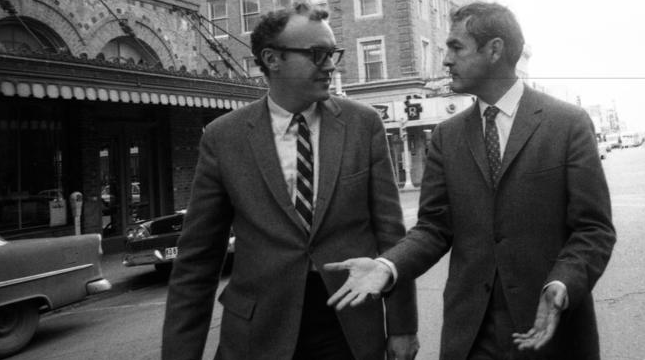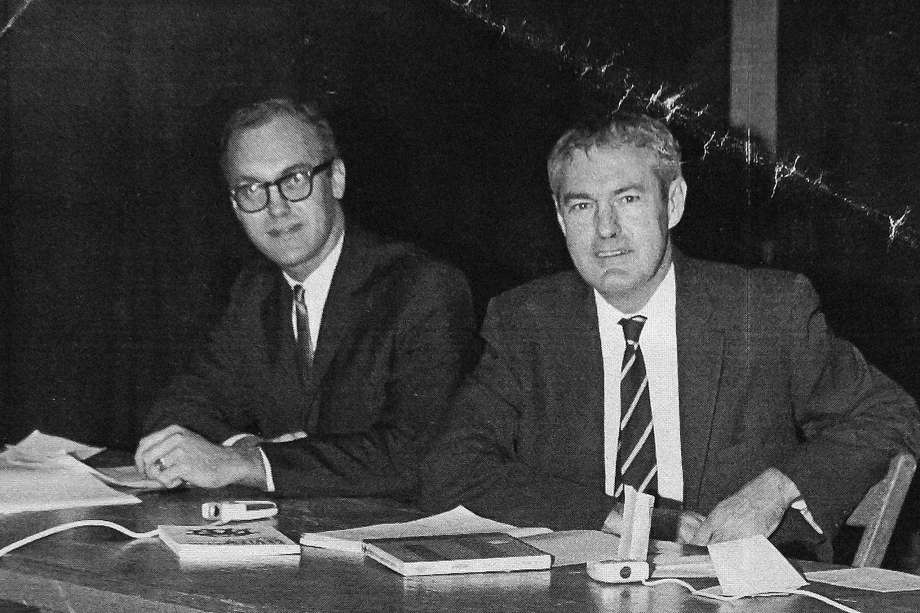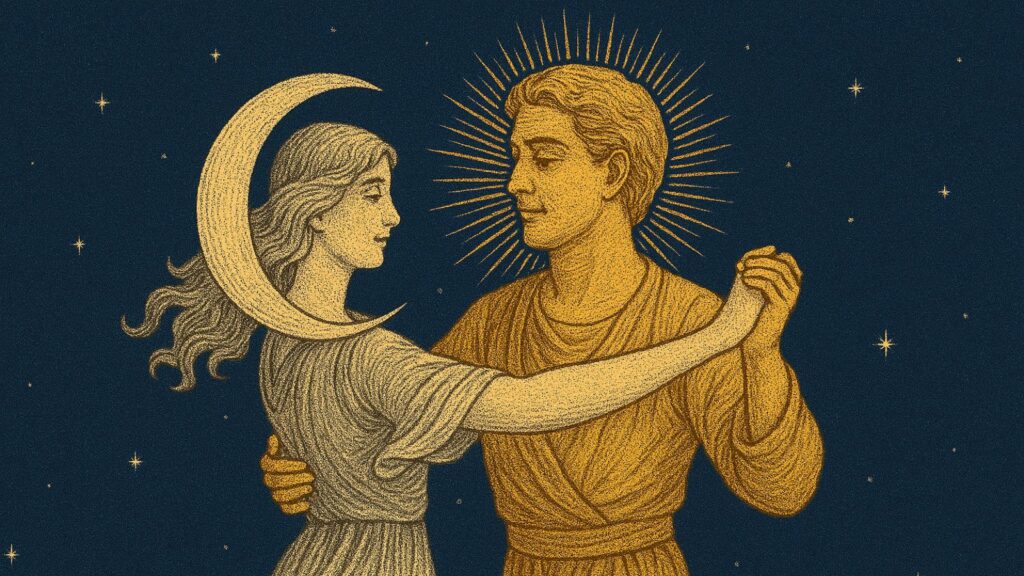No one knows for certain what lies beyond the threshold of physical death. Of course we all might have ideas about the afterlife (or lack thereof), some of us even swearing by such notions, but only when confronted with the reality of death are we forced to come to grips with the limits of our knowledge and the integrity of our beliefs.
In the new film Dying to Know: Ram Dass & Timothy Leary, directed by New Mexico filmmaker Gay Dillingham, two former collaborators and distant friends are brought together after a long separation to share the experience of Leary’s encounter with certain death from cancer. Each thinker had each managed, in his own unique way, to exert a large influence upon the psychedelic generation of the 1960’s counter-culture, often discussing the phenomenon of ego-death and the ‘afterlife’ as they knew it from psychedelic experience or meditation.
This candid and exceptionally intimate account of their reunion compiles a bounty of rare and deeply personal footage to reveal how Leary and Ram Dass deal with the limits of their knowledge and the integrity of their own thinking. The result is a heartfelt and often humorous display of mental vigor and elasticity exhibited by the two influential men during a time of intense spiritual stress at an advanced age. Viewers will be moved by the encounter and educated by the in-depth historical context provided in the film.
Reality Sandwich caught up with director Gay Dillingham while she was in town for the New York run of Dying to Know.
RS: Dying to Know has all the trappings of a true labor of love. How would you say it has affected you personally to work with such inspiring material so intensely, and for so long?
Gay Dillingham: This film/story made me as much as I made this film. So there is no way to explain a journey of 20 years other than as a labor of love. I grew up with this material and these two men as I dug through archives and found the story I wanted to tell – a story of practicing death and rebirth as a transformational process.
This film works with a great deal of rare footage not necessarily intended for the big screen while at the same time bringing together a breadth of historical information to provide context. I think audiences will be pleased with how much they can learn while also being touched on a deep emotional level. Could you describe your approach to the editing and writing process?
Gay Dillingham: I worked with the footage for a number of years, wrapping my arms around the story I wanted to tell, and in fact realized it was many stories coming together through the portal of a relationship between these 2 men. I worked getting the early footage between Leary and Ram Dass, then the single interviews before Leary died and Ram Dass had his massive stroke. I set the film down for a number of years while Ram Dass was adapting and rehabilitating from his stroke, and I was going through a family death and building an environmental business.
I was then lucky enough to find a brilliant editor, David Leach, to work with, who had the patience, heart and intellect to help me weave together the threads of this complex story. I needed to dig through archives, research, read and contemplate what the story was that I was interested in and what could hold my attention. It was their fresh, unique, and inspired approach to our taboos of death and drugs basically that kept me coming back to the material. It was also a process to get past the caricatures my media culture had handed me to the human story and their cosmic love affair.
I had many years when I was not making film, so I’m grateful this was the film that brought me back to filmmaking.
Robert Redford was the first person outside my friends or family that really took a look and validated the film and what I was trying to do. He generously contributed his narration, but more importantly, he gave me his notes near the end when I really needed a master storyteller. I’m eternally grateful to him.
Over the decades, Leary has become something of a scapegoat for both the scientific establishment and the emerging wave of psychedelic culture at large. Dying to Know seems to both humanize Leary and provide background information that serves to restore a more positive image of his towering mind and influence.
As the director, can you speak to that intention and perhaps describe what you feel a balanced view of Leary should look like moving forward?
Timothy Leary is an enthusiastic, radical social scientist that taught us the importance of Thinking for Ourselves. He is a brave visionary who could see outside systems, a flawed human being who ran away from real emotional intimacy. He was doing the best he could in a social political storm that he helped generate.
Given the typical view of Leary has been to glorify or demonize him, I think a more balanced view of Leary is what you see in this film because the truth of Leary’s life comes through the lens of Ram Dass’s love for him, rather than judgement.
I suspect that many viewers will learn of Ram Dass’s homosexuality for the first time while viewing this film. Even more will discover the quality of affection that colors his dynamic with Leary. In fact, it could even be said that the picture of Leary presented is as if seen through Ram Dass’s eyes. Was this your intention or something that emerged from the process organically?
Yes, it was both my intention to pursue this and their multi-layered relationship that emerged organically for me over time. In a culture that values the individual over the collective, I find that relationship is where life happens. I have seen so many individuals judged, chewed up and spit out ,so telling the truth of Tim’s life through the eyes of Ram Dass was to see him through the lens of love instead of judgment.
Since you yourself are not a member of the same generation as the two influential figures portrayed in this film, it is evident that Dying to Know is much more than a nostalgia piece. What significance do you think this intimate portrayal might have today, a time that some are calling the psychedelic renaissance?
My hope is that this film helps contextualize these men and their role in history, which includes the psychedelic renaissance. I hope that heart of their work and message breaks through to a wider audience, the value of “set and setting” when using these strong tools and drugs to dissolve boundaries and practice death. Their real contribution was to expand consciousness. As Ram Dass said to me in my interview with him for the New York Daily News, ”Though I got fired from Harvard, I was never thrown in jail, while poor Timothy got the brunt of it. He handled it differently. He was the revolutionary, I was the evolutionary. As the clinician I turned inward, as the social scientist he looked outward.
I hope this will be a story around the campfire of our time and will make it through the ages.
I hope to reach people where they are. I hope to open minds and hearts and relieve some of the fears we have about drugs and psychedelics, and also the deep fears we have about death.
I’d like to conclude by zeroing in on an element of the film that was, for me, a profound take away. These two great thinkers, each having spent so much of their lives espousing wisdom related to ego-death, are here confronted with the brutal and intimate reality of Leary’s physical death. What struck me was their honesty and playfulness. There is in each a willingness to admit what they do not or cannot know, and even to laugh at times in the face of that same uncertainty.
Do you suppose that this humility, at least in the intellectual sense, was something that came about through the tragedy of cancer, or that it was an essential quality that set these two apart from lesser thinkers?
It seems to me their humility and humor come from a spirit that is Dying to Know.















